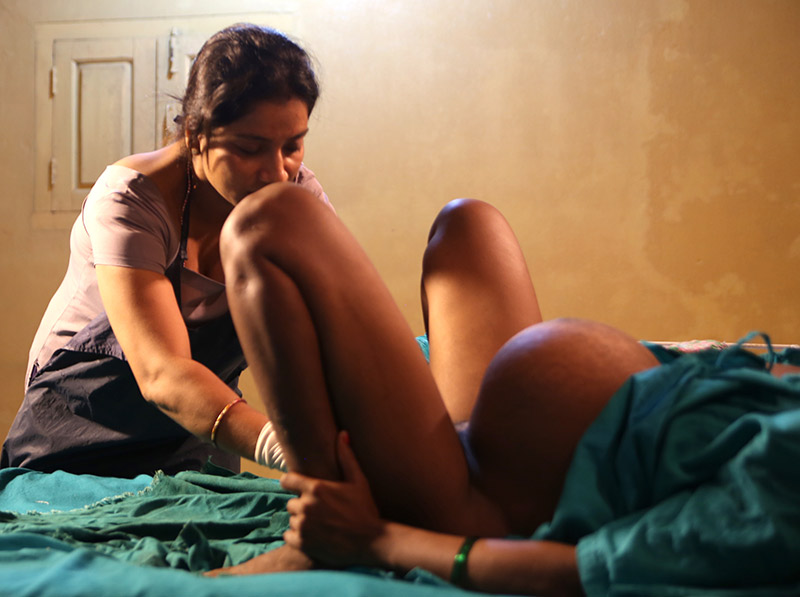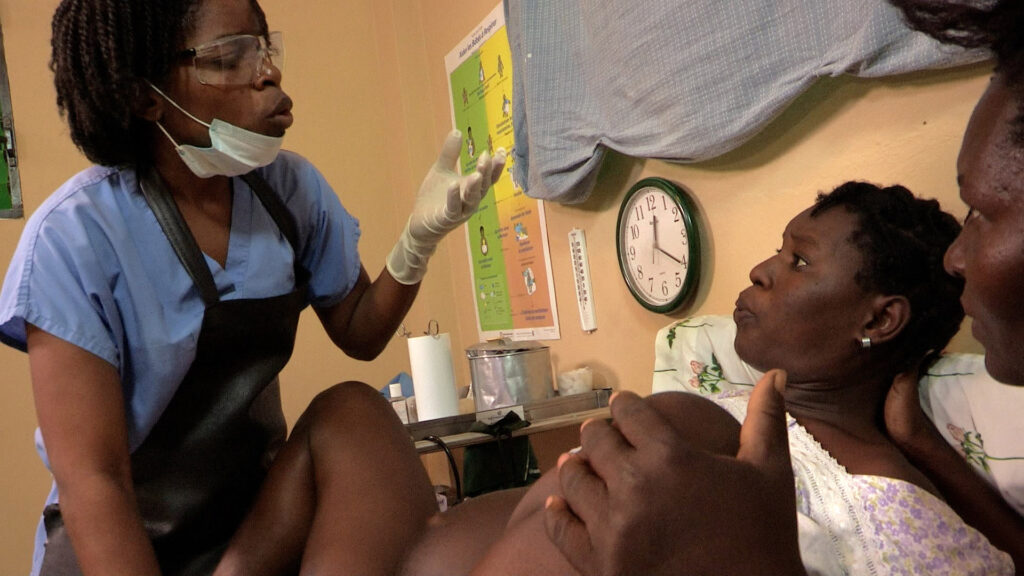Childbirth Series
Our Childbirth Series is designed to improve the quality of care during childbirth and protect the lives of birthing women.
Ten million women suffer injury, infection, or disease in childbirth each year, and 300,000 of these woman die. In 2015, we produced our first 12 childbirth videos. These films focus on normal birth, demonstrating best-practice care during labor, birth, and immediate postpartum. They showcase a midwifery approach to care with a birth attendant working solo, the norm in small facilities throughout much of the developing world.
In 2018, we decided to produce a film on live newborn resuscitation. Due to the need to spend significant time in busy maternities, we developed an additional suite of 35 films focused on childbirth skills and complications. These include five videos for women.

...we have used your films in Africa
training nomadic women in safer practices for birth…
The students LOVE your films…
it is like being at the bedside or right in the room.
They are memorable and so informative.
Patricia Manzon, Nomad Foundation
Our videos model the rapport between the birth attendant and the woman. This interaction is an important feature of our films which aim to teach humanistic care for birthing women.
A tremendous amount of work has gone on “behind the scenes” to ensure the accuracy, authenticity, and humanity of our childbirth videos. We are very grateful to all the people who have given their time and expertise so generously to make this comprehensive body of work a reality, and especially to the women who agreed to be filmed.
How our childbirth videos are making a difference
The videos cover essential topics in childbirth and are used by skilled birth attendants (midwives, nurses, and doctors) around the world. These topics require hard-to-source live footage that is often not available to students and practitioners. The videos can be especially valuable in learning about the management of uncommon events.
The videos have been integrated into several highly respected and widely used training programs such as WHO’s Essential Childbirth Care course and the Helping Mothers Survive modules, developed by Jhpiego and endorsed by ICM, FIGO, UNFPA, ICN, and AAP.
Testimonials
Acknowledgements
Primary Sources
A Book for Midwives, Hesperian Health Guides, 2013
IMPAC: Pregnancy, Childbirth, Postpartum and Newborn Care, WHO, 2006, 2015
IMPAC: Managing Complications in pregnancy and Childbirth, 2017
Helping Mothers Survive, Essential Care for Labor and Birth, 2018
Helping Mothers Survive, Complicated Labor and Birth Flipbook, 2019
Helping Mothers Survive, Bleeding After Birth, Provider Guide, 2015
Helping Mothers Survive, Preeclampsia/Eclampsia Provider Guide, 2016
Saving Mothers Lives, an NASG Training Video, Suellen Miller, 2015
Varney’s Midwifery, 2019
A Healing Passage, Anne Frye, 2010
Content Experts
Catherine Carr, DrPH, CNM
Robyn Churchill, CNM
Susheela Engelbrecht, CNM
Cherrie Evans, DrPH, CNM
Laura Fitzgerald, CNM
Martha Goedert, CNM
Karen Hays, DNP, CNM
Justus Hofmeyr, MD, OBGYN
Suellen Miller, PhD, CNM
Alemnesh Reta, RM, MPH
William W. Young, MD, OBGYN
Clinical Sites
NEPAL – United Mission Hospital, Tansen
HAITI – Saint Therese Hospital, Hinche
NEPAL – Paropakar Maternity Hospital, Kathmandu
GHANA – Korle Bu Hospital, Accra
GHANA – Tema General Hospital, Tema
INDONESIA – Budi Kemuliaan Hospital, Jakarta
RWANDA – Muhima Hospital, Kigali
Health Worker “Actresses”
Nepal – Pabitra Khanal, nurse
Haiti – Mirline Laguerre, midwife
Haiti – Genette Thelusmond, midwife
Ghana – Juliet Opare Budu, midwife
Ghana – Joana Boakye, midwife
Rwanda – Umucyo Josette, midwife
Rwanda – Umuriza Rwigire Jovia, midwife
Rwanda – Uwizeyimana M. Chantal, midwife
Indonesia – Rani Patimah, midwife
Indonesia – Erina Windiany, midwife
Film Team
Deb Van Dyke – producer, director
Mark Binder – videographer
Bishnu Kalpit – videographer
Joe Brunette – videographer
Maria Stenzel – videographer (Rwanda)
Dennis Angga – videographer (Indonesia)
Laurie House – videographer (Haiti)
Dan Cassano – editor (first set)
Tony Bacon – editor (last set)
Ray Downing – animator (first set)
Mesa Schumacher – animator (last set)
Charlotte Blake Alston – English narrator
Jeanne Bernier – French narrator (first set)
Anne Lehericey – French narrator (last set)
Maria Alexandra Granja – Spanish narrator
Funding Support
A grant from The Price Family Foundation was instrumental in making the first 12 childbirth videos possible. The second series of birth videos was partially funded by Latter-day Saint Charities. We would also like to acknowledge the generous support from our friends and neighbors in the Mad River Valley of Vermont and beyond.



